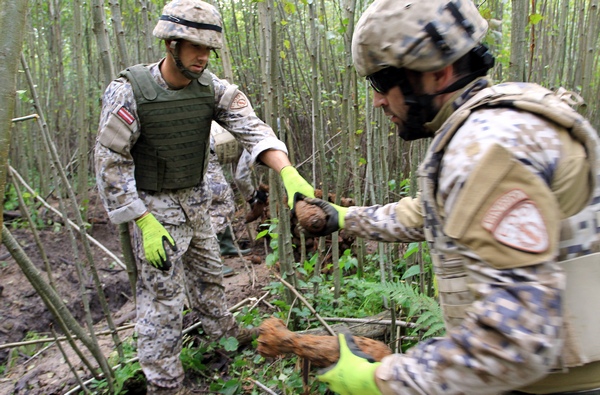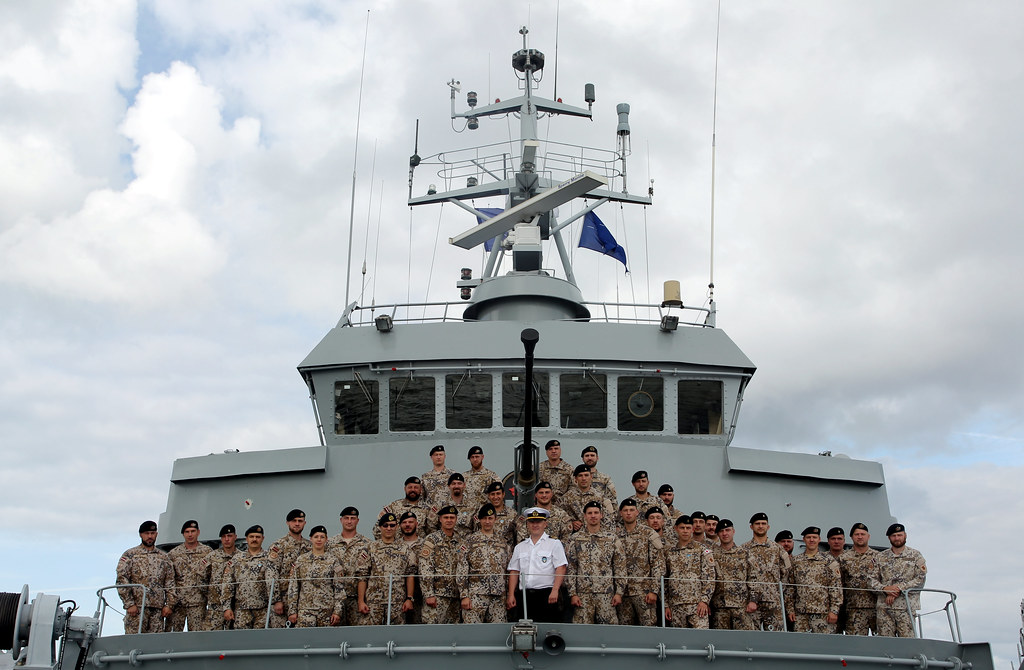Environment Contamination Caused by Explosive Ordnance
In Latvia, the total area of territory contaminated with explosive objects exceeds 100,000 ha. First and Second World War battle fields are subject to a particularly high density of soil contamination with explosive objects especially in the districts of Liepāja, Tukums, Dobele, Cēsis and Madona.
Explosive objects can also still be found at the former firing ranges and military bases of the Soviet Army. Only a small part of the territories formerly used by the Soviet Army is currently used for military purposes. Most of these territories have been transferred in the ownership of municipalities, including locations with the highest contamination level in Latvia: the former Aviation Bomb Firing Range in Zvārde, as well as the former Ammunitions Depot in Cekule.
Even though units of the National Armed Forces (NAF) are mostly located in the territories of the former Soviet military objects, they are not responsible for clearing all the territories contaminated by the Soviet Army. However, the Unexploded Ordnance Disposal company of Engineering Battalion 54 of the National Guard organises annual training, during which the clearance of the territory of the former Ammunitions Depot in Cekule takes place.
The Explosive Ordnance Disposal (EOD) School was established in 2002. From 2003 onwards, the EOD School began to carry out EOD personnel training complied with the qualification requirements of the NATO EOD service. At the school, soldiers in the EOD service master reconnaissance and the disposal of EO, as well as use of special EOD devices and equipment. A course in mine detection is also organised for the training of NAF soldiers who will later be deployed in international peace-keeping operations. In 2010, 72 soldiers were trained in different courses of the EOD School. Civilians also visit EOD within the parameters of civil-military co-operation. During the course of these visits, they are briefed about the danger caused by EO and action in cases of its discovery.

From 2003 onwards, the EOD School began to carry out EOD personnel training complied with the qualification requirements of the NATO EOD service. At the school, soldiers in the EOD service master reconnaissance and the disposal of EO, as well as use of special EOD devices and equipment. A course in mine detection is also organised for the training of NAF soldiers who will later be deployed in international peace-keeping operations. In 2010, 72 soldiers were trained in different courses of the EOD School. Civilians also visit EOD within the parameters of civil-military co-operation. During the course of these visits, they are briefed about the danger caused by EO and action in cases of its discovery.
NAF personnel have been disposing explosive ordnance in the territory of Latvia since 1993. Activities with explosive objects are particularly dangerous and therefore considered as combat tasks. On average, the Unexploded Ordnance Disposal company of Engineering Battalion 54 of the National Guard disposes approximately 4000-5000 large calibre ammunition items per year.

It has determined that over 80,000 sea munitions and other explosive ordnance are located in the Baltic Sea, including Latvia’s territorial waters. NAF Naval Force Flotilla on its own or as a part of the Baltic Naval Force Squadron (BALTRON) discover and eliminate approximately 80 unexploded explosives per year. Every year the international trainings Open Spirit and MCOPLAT take place in the waters of Latvia, Lithuania and Estonia, and during these trainings the largest number of unexploded ordnance units is being eliminated. The Coast Guard Service is also involved in the disposal of unexploded ordnance by receiving information from fishermen about mines and other unexploded ordnance found in their fishing-nets.

